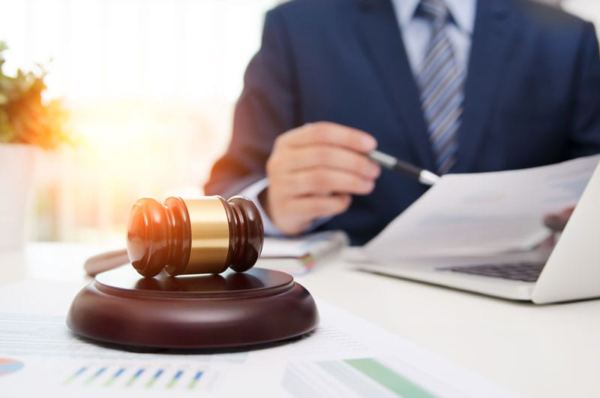Bankruptcy Fraud – What You Need To Know To Avoid Mistakes When Filing
The topic of bankruptcy fraud and its legal consequences is both complex and multi-faceted. In a more detailed exploration of this subject, we can break down the various aspects of bankruptcy fraud, the forms it takes, the legal framework and consequences, and preventive measures.
Expanded Understanding of Bankruptcy Fraud
Bankruptcy fraud is a criminal act that occurs within the context of the federal bankruptcy process.
It involves a deliberate attempt by an individual or entity to abuse the bankruptcy system, typically for personal gain or financial relief.
The cornerstone of bankruptcy law is the full and honest disclosure of an individual’s financial status, and any deviation from this truthfulness can constitute fraud.
In-Depth Look at Common Forms of Bankruptcy Fraud
- Concealment of Assets: More than just hiding physical assets, this can include offshore accounts, investments, or even intellectual property. Individuals may transfer these assets to acquaintances or use sophisticated methods to hide their true value.
- Multiple Filings: In some cases, individuals file for bankruptcy in different states using aliases. This tactic is employed to complicate the process and avoid detection of asset discrepancies.
- Petition Mills: These are often predatory operations that target vulnerable populations, promising debt relief through bankruptcy. Victims of these schemes frequently find themselves in deeper financial trouble.
- False or Incomplete Filings: Intentionally leaving out creditors, underreporting income, or inflating expenses in bankruptcy forms are forms of fraudulent activities.
Legal Consequences of Bankruptcy Fraud – A Deeper Dive
The legal system treats bankruptcy fraud with utmost seriousness:
- Criminal Penalties: Conviction can lead to imprisonment, hefty fines, or both. The severity of the penalty often correlates with the extent of the fraud committed.
- Denial of Discharge: A court may refuse to discharge the debtor’s obligations if fraud is detected, leaving them accountable for all debts.
- Civil Penalties: These may include monetary fines or forfeiture of assets, further complicating the individual’s financial situation.
- Reputational Damage: The social and professional stigma attached to a fraud conviction can be long-lasting and impact future opportunities.

Legal Process and Investigation – A Closer Look
The investigation of bankruptcy fraud typically involves multiple federal agencies, including the FBI and the U.S. Trustee Program. The process can be initiated by reports from creditors, trustees, or through random audits. Investigations involve meticulous examination of financial records, transactions, and debtor conduct.
The investigation and legal process surrounding bankruptcy fraud are intricate, involving multiple steps and agencies to ensure thoroughness and adherence to legal standards.
Initiation of Investigation
Investigations into bankruptcy fraud typically begin in one of several ways:
- Audits: Random audits of bankruptcy filings can uncover discrepancies or irregularities that suggest fraudulent activity.
- Reports: Creditors, bankruptcy trustees, or concerned individuals can report suspected fraud. These reports are taken seriously and often trigger an investigation.
- Red Flags: Certain patterns or “red flags” in bankruptcy filings, such as significant asset transfers prior to filing, can initiate an investigation.
Investigative Agencies
The primary agency responsible for investigating bankruptcy fraud in the United States is the Federal Bureau of Investigation (FBI). However, other entities also play crucial roles:
- U.S. Trustee Program: Part of the Department of Justice, this program oversees the administration of bankruptcy cases and has the authority to refer cases to the FBI.
- Internal Revenue Service (IRS): In cases where bankruptcy fraud intersects with tax evasion, the IRS may be involved.
- Securities and Exchange Commission (SEC): For fraud cases involving publicly traded companies, the SEC may also participate in the investigation.
Investigative Process
The investigative process is comprehensive and includes several key components:
- Financial Analysis: Investigators conduct a thorough review of financial records, including bank statements, asset transfers, and transaction histories.
- Interviews and Depositions: Key individuals, including the filer, creditors, and associates, may be interviewed to gather additional information.
- Forensic Accounting: In complex cases, forensic accountants may be brought in to uncover hidden assets or fraudulent transactions.
- Surveillance and Data Gathering: Investigators may use surveillance or data mining techniques to track asset movement or uncover hidden information.
Legal Proceedings
Following the investigation, if sufficient evidence of fraud is found, the case moves to legal proceedings:
- Filing of Charges: The U.S. Attorney’s Office, upon recommendation from the investigating agency, files charges against the individual or entity suspected of bankruptcy fraud.
- Court Proceedings: The case is then brought before a federal court. Defendants are entitled to legal representation and due process.
- Sentencing: If found guilty, sentencing depends on the severity of the fraud, prior criminal history, and other factors. Penalties can include imprisonment, fines, or both.
Challenges in Investigation
Investigating bankruptcy fraud presents several challenges:
- Complexity of Financial Transactions: Unraveling complex financial schemes requires expertise and time.
- International Jurisdiction Issues: Cases involving assets in other countries can be particularly challenging due to jurisdictional issues.
- Resource Constraints: The extensive nature of these investigations means they can be resource-intensive.
Role of Technology
Advancements in technology have significantly aided the investigation of bankruptcy fraud. Digital forensics, data analytics, and sophisticated tracking systems enable investigators to uncover fraudulent activities that might otherwise remain hidden.
The investigation and legal process of bankruptcy fraud are critical in maintaining the integrity of the bankruptcy system. These procedures underscore the importance of transparency and honesty in financial disclosures during bankruptcy filings.
The rigorous nature of these investigations and the severe penalties for fraud serve as deterrents, helping to preserve the bankruptcy process’s fairness and effectiveness.

Case studies provide concrete examples of bankruptcy fraud. For instance, cases where business owners transferred assets to family members, or individuals who failed to disclose significant lottery winnings while filing for bankruptcy.
These real-life scenarios illustrate the diverse methods used to commit bankruptcy fraud.
Preventing Bankruptcy Fraud – Comprehensive Strategies
Preventing bankruptcy fraud is a multifaceted endeavor that involves various stakeholders including individuals filing for bankruptcy, legal professionals, and the judicial system. Here’s an overview of comprehensive strategies to prevent such fraud:
- Education and Awareness: Education is key in preventing bankruptcy fraud. Individuals considering bankruptcy should be made aware of the legal requirements and consequences of fraudulent actions. This can be achieved through informational resources, seminars, and counseling sessions.
- Professional Guidance: It’s crucial for individuals to seek guidance from qualified legal professionals. Bankruptcy attorneys can provide invaluable advice on properly disclosing all assets and liabilities, thus ensuring compliance with legal standards.
- Stringent Legal Protocols: The legal system plays a significant role in preventing fraud. This includes thorough checks and balances in the bankruptcy filing process, such as requiring detailed documentation and verification of financial information.
- Ethical Standards for Legal Professionals: Attorneys and other professionals involved in the bankruptcy process must adhere to high ethical standards. Bar associations and legal oversight bodies should monitor and enforce these standards to prevent misconduct.
- Advanced Technology in Monitoring and Detection: Leveraging technology such as data analytics and forensic accounting can help in early detection of potential fraudulent activities. These technologies enable a more efficient and thorough analysis of financial records.
- Regular Audits and Random Checks: Implementing regular audits and random checks of bankruptcy filings can act as a deterrent for fraudulent activities. These audits help in identifying discrepancies and taking timely action.
- Collaboration between Financial Institutions and Legal Authorities: Effective communication and collaboration between financial institutions and legal authorities can facilitate the sharing of information, thus aiding in the detection and prevention of fraud.
- Public Reporting Mechanisms: Establishing mechanisms for the public, including creditors, to report suspected bankruptcy fraud can enhance the detection process. Such reports can provide valuable leads for investigative authorities.
- Ongoing Training for Trustees and Judges: Regular training sessions for bankruptcy trustees and judges can keep them updated on the latest trends in bankruptcy fraud and the best practices for detection and prevention.
- Personal Responsibility: Ultimately, individuals filing for bankruptcy must understand the gravity of the process and their personal responsibility to be honest and transparent in their disclosures.
Through these comprehensive strategies, the occurrence of bankruptcy fraud can be significantly reduced, thereby preserving the integrity and effectiveness of the bankruptcy system.
In Conclusion
Bankruptcy fraud is a grave offense with far-reaching legal and personal consequences. It undermines the integrity of the bankruptcy system and can lead to severe penalties.
Understanding the nuances of bankruptcy fraud is critical for anyone involved in the bankruptcy process.
This overview underscores the importance of transparency and adherence to legal standards in the bankruptcy process. Remember, the key to avoiding bankruptcy fraud is full disclosure and honesty in all aspects of the bankruptcy filing.
Learn More
At Blue Bee Bankruptcy, our lawyers are highly experienced in bankruptcy options. More importantly, we understand that each case we receive is unique and each client has different needs and goals. We will discuss these signs with you and decide the best route to take.
We strive to help our clients rebuild their lives and take steps toward a better financial future through filing.

If you’re dealing with the potential of bankruptcy, give us a call. Our team will work to help you by reviewing all of the options our firm has available. We will ensure you’ll get the best possible outcome for your situation.
Get in touch today so we can start working on either halting bankruptcies or preventing them from taking place altogether!
Contact Us Today For Help! You can schedule your free consultation online or call us at (801) 285-0980.




